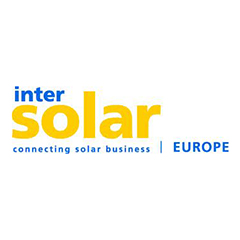The German photovoltaics market is undergoing a rapid transformation. Legislation and price developments in the field of photovoltaic systems are changing the conditions faced by the industry, with small and medium enterprises (SMEs) especially reaping the rewards. While reasonable rates of return were once predominantly guaranteed by feed-in tariffs, new business models are now emerging, with on-site consumption and direct marketing becoming increasingly attractive. New possibilities are even being created for plant financing in the form of plant leasing schemes and community energy cooperatives. At Intersolar Europe 2013, which takes place from June 19-21 at Messe München, numerous exhibitors showcase a variety of new PV system solutions and investment opportunities. Exhibition tours, workshops and presentations at PV ENERGY WORLD shed light on the topics from a variety of perspectives and a specially dedicated set of presentations at the Intersolar Europe Conference rounds off the range of information available at the exhibition on new business models for the photovoltaics (PV) industry.
To date, feed-in tariffs were the greatest incentive for investing in solar power. However, increasing electricity prices, tumbling feed-in tariffs and falling module prices are resulting in the on-site consumption of self-generated solar power becoming increasingly attractive. According to an electricity price analysis conducted by the Berlin-based German Association of Energy and Water Industries (BDEW), the electricity price paid by private householders has risen over the last five years from an average of 20.64 euro cents per kilowatt hour (kWh) in 2007 to 25.89 euro cents per kWh in 2012, and a further price increase is expected. Small and medium businesses (SMEs) are also unable to escape the effects of rising electricity prices. Against this backdrop, the on-site consumption of solar power represents an attractive economic and reliable alternative to power generated using conventional methods. Additionally, low PV system prices mean that solar power can already be generated in Germany for between 12 and 15 euro cents per kWh. The desire for independence and electricity prices that remain calculable in the long term is exerting an ever greater influence on the purchasing decisions of private and commercial investors and companies.
Product manufacturers develop into systems providers
These changing demands are providing the photovoltaics industry with an opportunity to develop new business models, products and services. On-site consumption by private householders, industry and commerce has resulted in a trend emerging towards combining PV installations with other system components, such as energy storage systems and heat pumps that work alongside energy management systems. Energy storage systems allow surplus electricity to be stored for times at which it is needed, while solar power can be used to drive heat pumps, and intelligent control systems allow solar power production and consumption to be synchronized with the use of domestic appliances. Installation engineers, planners and developers are also benefiting from these developments, as the on-site consumption market requires specialist expert knowledge and greater levels of consultation in order to meet consumers’ individual requirements. Wholesalers and manufacturers are able to support their trading partners by providing documentation and use this distribution of targeted knowledge to tap new market potential.
Incentives for direct marketing
Financial incentives for the direct marketing of solar power have provided PV plant operators with a worthwhile alternative to feed-in tariffs since the revised version of the Renewable Energy Sources Act (EEG) came into force on January 1, 2012. Operators are able to sell their power directly on the European Energy Exchange in Leipzig (EEX). The revenues generated from doing so are supported by market and management premiums, meaning that if the power is marketed appropriately, the overall revenue produced is able to exceed that provided by feed-in tariffs. Specialist power traders are combining the outputs generated by several operators into virtual power plants, minimizing costs and risks for individual operators. Added to this is the option of concluding private supply agreements, in which plant operators are able to make direct arrangements with consumers.



























